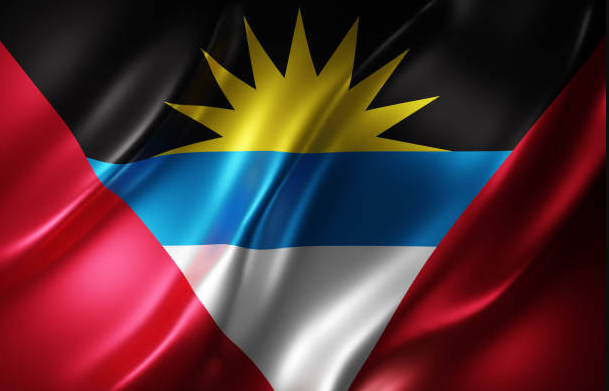Let’s talk about Antigua and Barbuda National Flag. Antigua and Barbuda is a small island nation in the Caribbean that gained independence from the United Kingdom in 1981. The country has a rich cultural heritage, which is reflected in its national symbols, including the national flag. In this article, we will explore the history, design, symbolism, and significance of the Antigua and Barbuda national flag.
History
The Antigua and Barbuda national flag was first hoisted on February 27, 1967, during the country’s colonial era as a British protectorate. The flag was designed by a high school student named Reginald Samuel, who won a competition to create the country’s national symbol. The design was later modified slightly by a committee of experts before it was officially adopted as the national flag.
Design of Antigua and Barbuda National Flag
The Antigua and Barbuda national flag consists of a red background with an inverted triangle of black and blue on the left side. The black triangle represents the African heritage of the country’s people, while the blue triangle represents the Caribbean Sea surrounding the islands. The gold sun in the center of the flag symbolizes the dawn of a new era for the country, while the V-shaped arrows pointing towards the sun represent the country’s determination to move forward.
Symbolism
The Antigua and Barbuda national flag is rich in symbolism, representing the country’s history, culture, and aspirations. The red background symbolizes the energy and vibrancy of the country’s people, while the black and blue triangles represent the unity of the country’s African and Caribbean heritage. The gold sun symbolizes the promise of a bright future for the country, while the V-shaped arrows represent the country’s determination to overcome challenges and achieve its goals.
Significance of Antigua and Barbuda National Flag
The Antigua and Barbuda national flag holds great significance to the people of the country. It serves as a symbol of national pride, identity, and unity. The flag is prominently displayed during national holidays and events, as well as on official government buildings, schools, and other public places. It is also used by Antiguans and Barbudans living abroad as a reminder of their roots and connection to their home country.
Flag Day
In Antigua and Barbuda, the national flag is celebrated every year on February 27th, which is also known as Flag Day. The day is marked by various events and activities, including flag-raising ceremonies, parades, and cultural performances. It is an opportunity for Antiguans and Barbudans to celebrate their national pride and heritage, and to reflect on the significance of the national flag.
FAQs
- Who designed the Antigua and Barbuda national flag?
Reginald Samuel, a high school student, designed the flag. It was later modified slightly by a committee of experts.
- What do the colors and symbols on the flag represent?
The red background symbolizes the energy and vibrancy of the country’s people, the black and blue triangles represent the unity of the country’s African and Caribbean heritage, the gold sun symbolizes the promise of a bright future for the country, and the V-shaped arrows represent the country’s determination to overcome challenges and achieve its goals.
- When is Flag Day celebrated in Antigua and Barbuda?
Flag Day is celebrated every year on February 27th.
- What is the significance of the Antigua and Barbuda national flag?
The national flag is a symbol of national pride, identity, and unity. It represents the country’s history, culture, and aspirations, and is prominently displayed during national holidays and events.
- What are some of the events and activities that take place on Flag Day in Antigua and Barbuda?
Flag Day is marked by various events and activities, including flag-raising ceremonies, parades, and cultural performances.
Conclusion
The Antigua and Barbuda national flag is a symbol of the country’s rich history, culture, and aspirations. Its design and symbolism reflect the unity and diversity of the country’s people, as well as their determination to overcome challenges and achieve their goals. Flag Day provides an opportunity for Antiguans and Barbudans to celebrate their national pride and heritage, and to reflect on the significance of the national flag.
References
- Antigua and Barbuda Government Information Service. “The National Flag of Antigua and Barbuda.” https://abgis.gov.ag/the-national-flag-of-antigua-and-barbuda/
- Central Intelligence Agency. “Antigua and Barbuda.” The World Factbook. https://www.cia.gov/the-world-factbook/countries/antigua-and-barbuda/
- Government of Antigua and Barbuda. “National Symbols.” https://www.antigua-barbuda.com/national-symbols/
